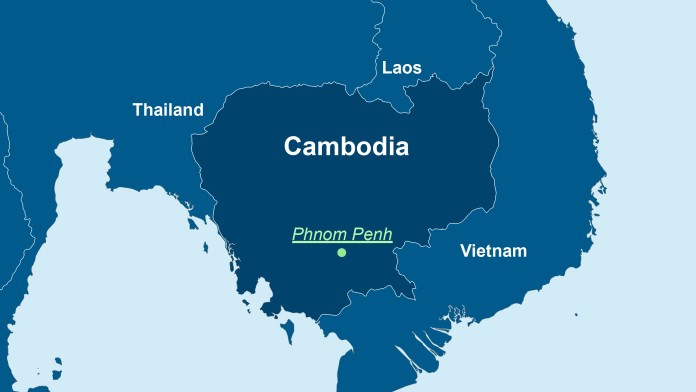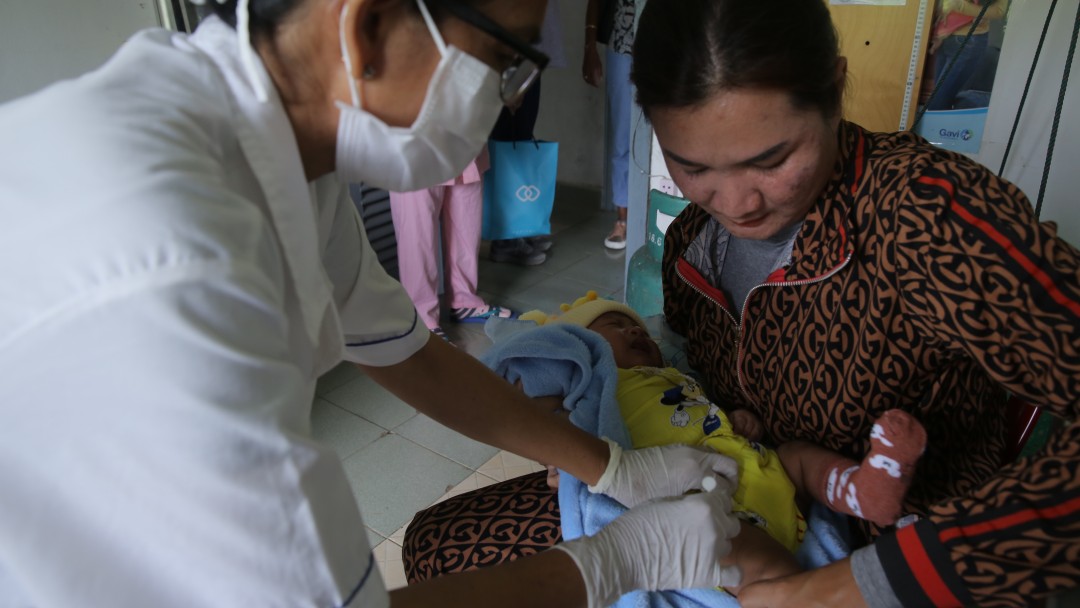
As of: 03/2024
Cambodia is experiencing rapid economic development. Per capita income has increased sharply in recent years. However, there are still many people who can barely afford to visit a public health station. Previously, households have had to cover a large part of treatment and medication costs themselves. This means that if one member of a family falls ill, the entire household is in danger of becoming impoverished. Non-communicable diseases such as diabetes and heart disease are on the rise. Due to their chronic nature, the management and treatment of such illnesses is expensive. The Cambodian government is aiming to promote more socially equitable access to health services with a large-scale programme. Commissioned by the German Federal Government, KfW is supporting a fund managed by the World Bank that finances the Cambodian programme.
Cambodia’s economy has grown very rapidly in recent years. An average annual growth rate of more than 7 per cent has been driven by labour performance in agriculture, clothing, tourism and construction. As a result, per capita income has increased significantly, from USD 250 per person in 1995 to USD 1,500 in 2020. However, this wealth is unevenly distributed. Close to 18% of the population still lives below the poverty line. The poverty rate is especially high in rural areas.
The economic growth has also been accompanied by an increase in life expectancy. However, not all Cambodians have experienced this positive development. About half of children under the age of five are underweight, increasing their risk of suffering from non-communicable diseases as an adult. The prevalence of such diseases, which include diabetes and heart disease, is increasing significantly: strokes and heart attacks are currently among the most common causes of death in Cambodia. Cancers are also on the rise.
The people affected not only suffer from the illness; they also have to bear a large part of the costs for health services themselves. If someone falls ill, the cost of medications and treatments can result in the entire family becoming impoverished.

In order to achieve the goal of universal health care in Cambodia, the government is implementing the Health Equity and Quality Improvement Programme (H-EQIP), funded by a fund managed by the World Bank. Various donors contribute to the funds, such as Australia, Korea, the Global Financing Facility, the World Bank itself and Germany. Commissioned by the Federal Ministry for Economic Cooperation and Development (BMZ), KfW is contributing EUR 16 million to the current phase III of H-EQIP, which has a total requirement of EUR 288 million. KfW also funded previous phases with a total of EUR 23 million.
The H-EQIP programme consists of four pillars:
As the project reduces private participation in the costs of treatment and medications, access to health services becomes fairer and more socially inclusive. People with existing conditions can be treated more quickly and as patients are able to use qualified public health facilities earlier and to a greater extent, damage to health and complications are reduced. Since the project specifically promotes the treatment of non-communicable diseases, it is also being increasingly aimed at older people, who are more likely to suffer from these diseases.
The entire population of around 16 million people in Cambodia benefits from the project because health services are improving. The project is particularly helping the poor and vulnerable sections of the population, who have previously been unable to afford health services or have had difficulty doing so. The project protects against impoverishment caused by high expenditure on healthcare services. It also enables fast and effective treatment in the event of a health crisis covered by the programme. Women, children and the elderly therefore benefit particularly from the project. The project also includes the collection of data on gender, age and geographical location in order to analyse which population groups are particularly disadvantaged.
The number of outpatients visiting the well-qualified public health facilities is increasing. Usage figures are to be increased further, particularly in rural districts where health services have been little used to date. In general, the proportion of patients who use the programme's outpatient service is increasing. By 2027, the proportion of the population to have received testing for high blood pressure is also set to increase from 5% in 2022 to 50%. This will involve over 700 health facilities. Significant improvements can also be observed in the national quality assessment of the healthcare facility.
The project contributes to the achievement of these following United Nations Sustainable Development Goals:
KfW Group
KfW Development Bank
Health and social security Asia
Share page
To share the content of this page with your network, click on one of the icons below.
Note on data protection: When you share content, your personal data is transferred to the selected network.
Data protection
Alternatively, you can also copy the short link: https://www.kfw-entwicklungsbank.de/s/enzBzDs-
Copy link Link copied